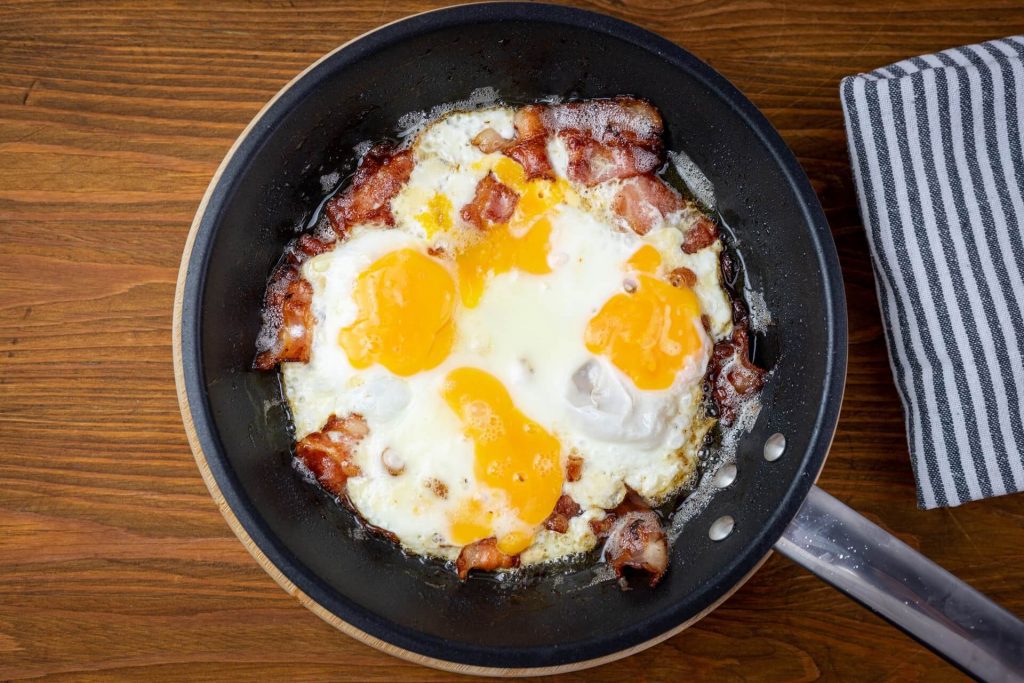The carnivore diet is an eating pattern that has been gaining popularity over the last few years. This very restrictive diet involves eliminating all plant foods and focusing exclusively on animal products. But can you enjoy tasty snacks like pork rinds on such a limited diet?
In this article, we’ll cover everything you need to know about eating pork rinds on the carnivore diet. We’ll look at whether they are allowed, their nutrition profile, benefits, downsides to consider, and how to incorporate pork rinds into your meal plan.
What is the Carnivore Diet?
Before diving into pork rinds specifically, let’s start with a quick primer on this meat-centric way of eating.
The carnivore diet, also called the all-meat diet or zero carb diet, involves eliminating all carbohydrate-containing plant foods. The only foods allowed on this restrictive plan are animal products like:
- Beef, lamb, poultry, pork
- Fish and shellfish
- Eggs
- Full-fat dairy
- Animal fats like lard or tallow
- Bone broth
- Organ meats like liver
All fruits, vegetables, grains, legumes, nuts, seeds, and plant oils are excluded. Even sweeteners, spices, and beverages like coffee or tea are limited by strict followers.
This elimination diet was popularized for health benefits like reduced inflammation, improved mental clarity, and weight loss. But it is somewhat controversial due to its extreme nature and lack of long-term research.
Now that you understand the general carnivore guidelines, let’s looks at the viability of pork rinds as a snack option.
Can You Eat Pork Rinds on the Carnivore Diet?
The answer here is yes; most carnivore experts agree pork rinds are a good snack on the carnivore diet.
Pork rinds, also known as cracklings or chicharrones, are made solely from fried or baked pork skin, which comes from a pig (an animal), which means they follow the carnivore diet premise of restricting all plant foods.
In fact, pork rinds are one of the most commonly recommended snack options for people following a carnivorous diet. They provide a satisfying crunch that can be hard to replicate without plant-based foods.
As always, be sure to choose a high-quality option that avoids unnecessary additives or vegetable oil. Check the ingredients – you want pork skin to be the only one. But overall, pork rinds are considered a carnivore diet-friendly snack.
Nutritional Value of Pork Rinds
One reason pork rinds appeal to the carnivore community is their nutrition profile. Here is an overview of what’s in a 1-ounce serving of plain pork rinds:
- Calories: 145
- Fat: 9g
- Protein: 13g
- Carbs: 0g
- Sodium: 330mg
With zero carbs and a solid amount of protein and fat, you can see why this crunchy treat fits the macros of a low carb, high fat meal plan.
In terms of vitamins and minerals, one serving contains:
- Selenium – 58% DV
- Niacin – 15% DV
- Vitamin B6 – 7% DV
- Zinc – 7% DV
- Vitamin B12 – 7% DV
They a great snack providing a decent nutrient boost, with no preparation required. Pork rinds are also gluten-free and contain no sugar or artificial flavors. So from a nutritional perspective, they offer carnivore dieters protein, fat, and key micronutrients in each crispy, salty bite.
Pork Rinds: An Animal-Based Snack
Assuming pork rinds are carnivore-approved, what benefits do they offer followers of this meat-focused diet? Here are some of the main perks:
Fat and Protein Without Carbs
Each serving of pork rinds contains 13g of protein and 9g of fat – a solid macro profile for carnivores aiming for low carb and high fat/protein. This combo helps provide lasting satiation.
Convenient High-Protein Snack
Packaged pork rinds require no refrigeration or preparation, making them a portable source of protein, which helps keep you full between meals.
Variety of Flavors and Textures
From regular to bbq to hot and spicy, pork rinds offer fluffy, crunchy, salty flavor that satisfies cravings for both flavor and texture, often missing from the carnivore diet.
Satisfies Crunch Cravings
The crispy crunch of pork rinds replicates the satisfying mouthfeel of snack foods like chips, popcorn or pretzels that carnivores abstain from eating.
Widely Accessible
Pork rinds are carried at most grocery and convenience stores, making it easy for carnivores to find this snack no matter where they are.
Can Be Homemade Simply
Don’t like packaged versions? Homemade baked pork rinds are easy to prepare yourself using just pork skin, salt and spices.
So for carnivore dieters looking for a portable protein boost with satisfying crunch, pork rinds are a great option to help restrict carbs without sacrificing satisfaction.
Potential Issues with Eating Pork Rinds on a Carnivore Diet
Of course, no food is perfect. There are a few potential downsides carnivores should be aware of with overdoing pork rinds:
High in Saturated Fat
While the overall fat content isn’t extreme, pork rinds are high in saturated fat. Around 55-60% of the total fat content comes from saturated fat, which can have negative cardiovascular effects if not consumed in moderation.
High Sodium
The salt content of most packaged pork rinds is quite high, with 15-25% of your daily value in a single serving. Those limiting sodium intake may want to be mindful.
Heavily Processed
Homemade can be healthy – but packaged pork rinds involve high heat, chemical baths and artificial flavors. Some carnivores may prefer less processed snacks.
Not Nutrient Dense
While pork rinds contain some minerals, they are not a particularly rich source of vitamins like A, C, E or K. Don’t rely on them solely to meet micronutrient needs.
Contains Synthetic Preservatives
Check your ingredients. Many brands contain preservatives like citric acid, sodium nitrite, and “natural flavors” that don’t fit with clean carnivore eating.
Moderating intake, making your own, focusing on brands with clean ingredients, and pairing with nutritious foods can help overcome these pitfalls.
How to Add Pork Rinds to Your Carnivore Diet
Ready to work some crispy, salty, protein-packed cracklings into your carnivore eating plan? Here are some tips:
- Treat as a snack, not a meal replacement
- Stick to 1-2 servings max per day
- Choose baked over fried to cut down on oils
- Spice up homemade versions with taco seasoning or other spices
- Top carnivore chilis and soups for added crunch
- Select high quality brands without additives
- Balance with more nutrient-dense animal foods
- Stay hydrated – they contain salt!
Moderating portions, choosing baked or homemade, and pairing pork rinds with fatty meat or eggs helps maximize benefits while preventing nutritional shortfalls.

Sample Carnivore Meals with Pork Rinds
To give you ideas for incorporating pork rinds into carnivorous meal plans, here are a few recipe ideas:
Breakfast: Bacon and eggs with a side of pork rinds
Lunch: Taco salad with pork rinds instead of tortilla chips
Dinner: Pork rind “breaded” chicken tenders
See how easy it is to sub crispy pork rinds anywhere you’d typically have crunchy carb-based snacks or breading. Just be sure to avoid recipes with plant foods and stick to carnivore guidelines.
Is Eating Pork Rinds on Carnivore Right for You?
While pork rinds are certainly an approved snack for the carnivore diet, they may not be right for everyone. Here are a few factors to consider:
- Your health goals – are you doing carnivore for weight loss? Pork rinds may be too high in calories. For muscle gain or satiation they can be perfect.
- Sodium intake – avoid pork rinds if you are limiting salt or have been told to watch sodium levels.
- Ingredient sensitivity – some may react negatively to ingredients like citric acid or “natural flavors”. Read labels carefully.
- Food quality priorities – homemade or high quality pork rinds are best. Avoid if you do not want to eat heavily processed snack foods.
Carnivore Friendly Alternatives to Pork Rinds
A principal challenge for those adhering to a carnivore style of eating is the lack of variety. Here are some other snacks that are ok to eat on the carnivore diet:
- Beef jerky: high in protein and low in carbs. Look for brands without a lot of added sugar.
- Meat sticks: like jerky but in stick form. Try different flavors like summer sausage.
- Beef or turkey pepperoni slices: roll up with cheese for easy protein bites.
- Hard boiled eggs: portable and already perfectly carnivore compliant.
- Cheese crisps: bake shredded cheese into crispy crackers or chips.
- Tuna or chicken salad: make it creamy with mayo and eat with a spoon.
- Bone broth: nourishing light snack to sip throughout the day.
The key is sticking to animal products and avoiding any plant-based ingredients. Get creative with meat, eggs, dairy and fish for satisfying high protein snacks that align with carnivore guidelines. Moderation and variety are still key for any snack you choose.
The Bottom Line on Pork Rinds and the Carnivore Diet
Pork rinds can be enjoyed in moderation as a crunchy, protein-packed snack option for those following a carnivorous eating plan. When choosing high quality products and pairing with other nutrient-dense animal foods, they can add flavor and satiation without derailing your results.
Just be cautious of overdoing it on the salt, saturated fat, and potentially undesirable ingredients in some packaged pork rinds. As with any restrictive diet, work with your healthcare provider to determine if this very limited eating pattern is right for your situation.
In general though, pork rinds are a satisfying way to get a salty, crunchy snack fix without compromising your carnivore diet. Enjoy them occasionally as a substitute for the chips, crackers, pretzels and popcorn you’re missing out on. In the right amounts, they can be a better-for-you hog heaven!
